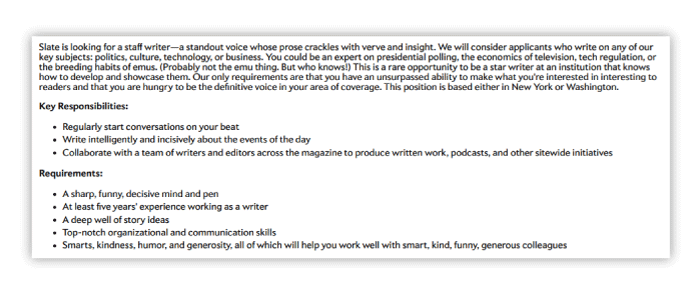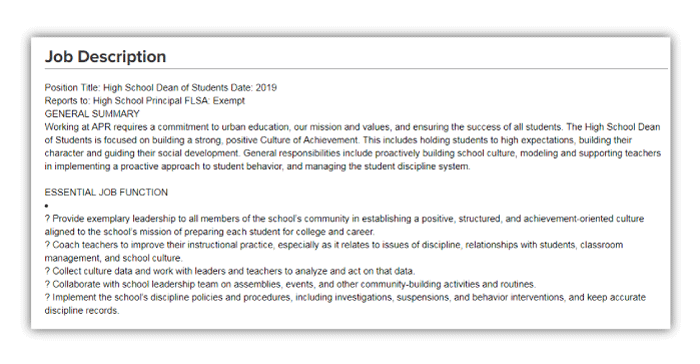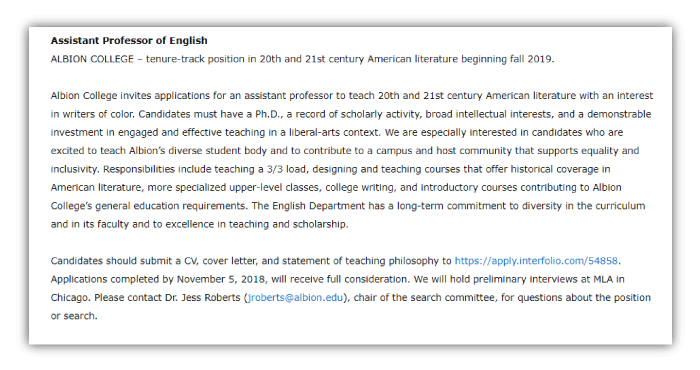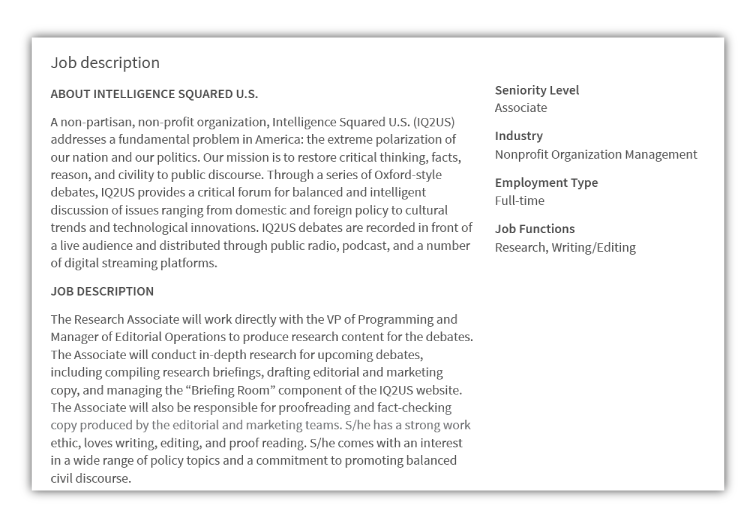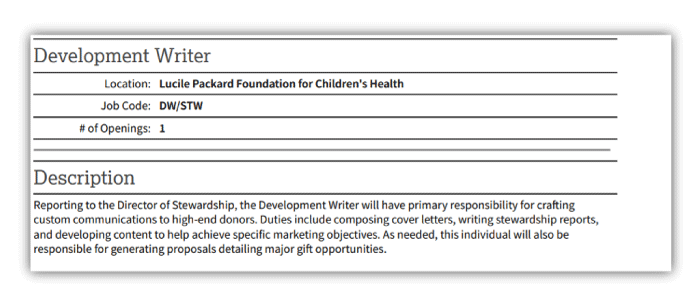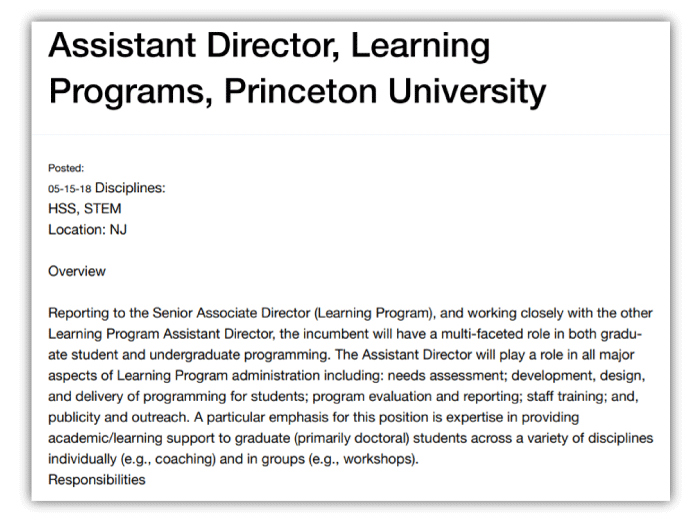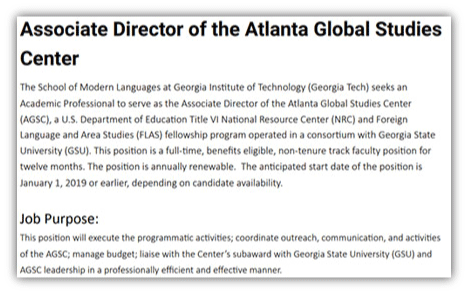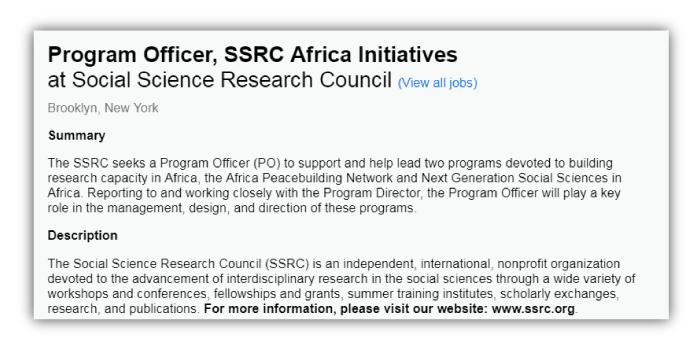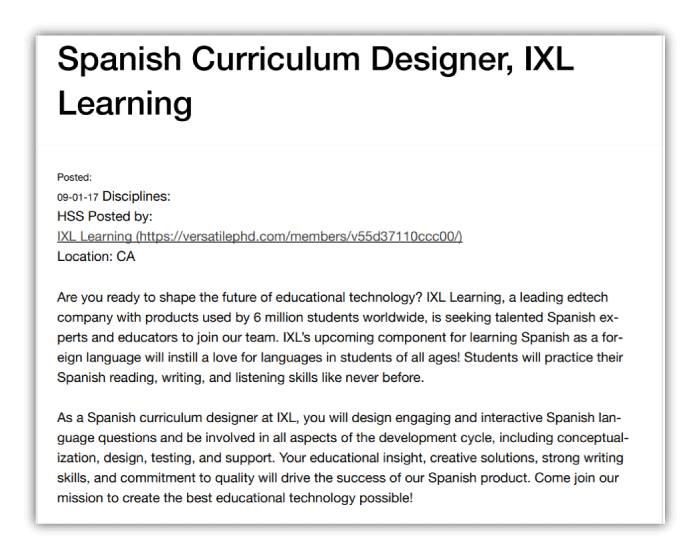I wrote this essay at the request of the Modern Language Association, as an update to an open letter to full-time faculty members I wrote and published on my blog in 2014, called “Why Buy the Cow?” That letter concerned my personal experiences as a “freeway-flying” adjunct: I was teaching, then, eight courses at three different institutions on four different campuses. At the time (academic year 2013–14), I was thirty-three years old and the exclusively single mother of a three-year-old son. I lived with my parents in the bedroom I had slept in as a teenager.
My life was, by all accounts, weird. During the day, I got by on some sort of magic (manic?) energy. Fueled by caffeine, strange grab-whatever-you-can food (the halls of academia, as you certainly know, are often littered with average-tasting, free fare), and a genuine passion (obsession?) with teaching eighteen- and nineteen-year-olds how to write sentences and connect to language and literature, I raced from campus to campus (sometimes three in a day) in my ten-year-old Volvo. That fall (2013), I arranged my schedule so that Monday through Thursday I taught back-to-back courses, including two supplementary one-hour workshops for the sections of the Accelerated Learning Program composition courses I was teaching at a state community college; that campus, a rural school, was a good hour away from my home, with no good, quick route back. By October, I left my 5:00 p.m. workshop in the pitch black and drove home desperate to relieve whichever generous family member had picked my son, Hank, up from daycare that day. Sometimes the harvest moon rose over the pinelands of southern New Jersey, and then, high in the night sky, shed wild light onto the Atlantic Ocean as the woods opened up into the coast. I noticed these things because, then, I noticed everything—I was almost maniacally attuned to every small detail, trying to think my way through the quandary of teaching 142 students to write six half-decent essays (you do the math) in a single semester while raising a small child. I felt like the speaker in Sylvia Plath’s “Tulips,” who is unable to close her eyes: Stupid pupil, it has to take everything in.
My days and nights vacillated between what amounted to a position of authority and control—teaching—to walking a careful tightrope of forced good nature and humility back at home, with my parents and my son. I moved home in 2012, having fled a disastrous relationship with Hank’s father, whose drug addiction and dangerous, narcissistic behavior had nearly killed both of us. In 2013, I was working to rebuild the familial trust I had destroyed during that relationship, but I was also hard at work to prove that this adjunct gig could lead to a full-time job. I had no idea if I was correct. In fact, I remember that one night in November 2013, after a long week of teaching, I sat up late, grading, at the kitchen counter, in actual despair that I would ever do this full time, that I would ever be, as I wrote in “Why Buy the Cow?,” a “real boy.” “Why Buy the Cow?” is full of witticisms and allusions and poetic language like that—part of the weirdness of my days, then, was that minute to minute, day to day, I was cramming the heads of others, or my own, full of lessons. The boundaries between teaching and living blurred in ways they never had before and never would again. After class, I drove home in the dark and with the radio deliberately left off, quietly reciting a poem I had to teach over and again, feeling like the words were well-lit houses I could enter and leave at will:
. . . Sometimes a whole civilization can be dying
Peacefully in one young woman, in a small heated room
With thirty children
Rapt, confident, and listening to the pure
God-rendering voice of a storm. (Dubie 204)
I was a woman on a mission. I had been an uneven, sometimes lazy student—but I was becoming an impassioned, impeccable teacher.
I had no other choice.
For reasons I probably need a therapist’s couch to fully articulate, I never removed myself from the “part-time faculty” e-mail list of that rural community college. I still regularly receive the messages that go out to their hordes of adjuncts (at last count, during my time there, I was one of almost ninety adjuncts teaching in the English department). These are strange letters—their tone attempts straightforward professionalism but ends up as wheedling condescension. Dear Colleagues, they always begin—and I cringe—before whatever light scolding or request for unpaid labor follows. In the time I have been receiving these—since 2012—I have never once seen an invitation to attend their so-called professional development workshops that included even a modest stipend.
The most recent e-mail came just this morning, as the light broke through my navy curtains and I opened my laptop to work—no longer the “busted” old machine I used to write “Why Buy the Cow,” but a crisp, university-sanctioned one that will, in two years’ time, be replaced by another crisp, university-sanctioned one if I ask. There, in my Gmail, was an “Update for Part-Time Faculty” broken into two parts. The first was the “Welcome Message from the New President” (an interim leader), composed in a dark brown, practically unreadable, cursive font and stamped at the top with a cherry blossom, like a note I might have sent to a friend in the ninth grade after an evening of toying with the new Print Shop settings in Windows 94: Hi Andrea! What’s up? I’m totally bored, so I wrote you this . . .
This particular missive was intended to assure part-time faculty that she was “aware of the trepidation here due to the uncertainty of the future of our county college.” Here, I imagined a long row of tired women, waking early to grade, as I wrote in “Why Buy the Cow?,” “fat stacks of essays,” with one skeptical eye on their e-mail and another attentive one on their students’ work. More than sixty percent of adjuncts, it turns out, are women, while more than sixty percent of tenure-track appointments are held by men (Flaherty; Birmingham). My imaginary women don’t grade with trepidation, and they don’t teach with it—but, once outside the classroom, in the emptying hallways and the faculty lounges, they move quietly, almost as if they want to be invisible, as if, already, their wish is granted, and, as class comes to an end, they are untouched, unnoticed, unseen.
By January 2014, I was tapped to teach a second spring course at Stockton University—an emergency overload, granted by the union’s good graces, which made me a half-time instructor. This—the idea that adjuncts or contingent faculty are used only in emergencies—is part of the way that unions maintain the appearance of being prolabor when, in fact, their adjunct ranks swell every year. According to the United States Department of Education’s 2009 Fall Staff Survey, of the 1.8 million total faculty in higher education in 2009, 1.3 million worked off the tenure track, and more than half of that total number worked as adjuncts instead of in contingent, full-time positions (qtd. in Portrait). In any case, I was now no longer, as I was fond of saying in mock-dramatic tones, a “lowly adjunct.” That spring (2014), I had a senior literature major working as my teaching assistant; he was brilliant, and a writing tutor, and unusually talented in the classroom, and ended up as my functional coteacher. When I would ask him for anything—whether it was to grade a quiz set or to hand me my water bottle—he would say, “Do it yourself, ADJUNCT!” in a faux-British accent, which was our favorite inside joke. He graduated that spring and the following year finished a master of arts in American studies in rapid time.
By then, it was 2016. Fewer than three years had passed since I had laid my head down on my parents’ kitchen counter and sobbed with the dread knowledge that I would never, ever be hired full time anywhere. That I would die penniless under my father’s thumb, without health insurance, like the adjunct martyrs I had been reading about in the news that year (Anderson). Instead, beginning in spring 2014, I had been rapid-fire promoted from half-time instructor to visiting assistant professor to assistant professor to coordinator of the first-year writing program. By 2016, my one-time teaching assistant was looking for work, and we were, as ever, looking for qualified adjuncts. I gratefully hired him to teach developmental writing. And just like that, I co-opted him onto the same wild ride I found myself on all those years ago.
Myths are useful classroom tools. Nothing illustrates the nature of human consciousness to my students quite like the moment in Genesis when God asks Adam, “Where are you?” and Adam replies, “I heard the sound of you in the garden, and I was afraid, because I was naked; and I hid myself” (Genesis 3.10).
At which point I pause and then say to my freshmen, some of whom are listening raptly, some of whom have one earbud in their ear and aren’t even trying to hide it, “Who told you that you were naked?” (Genesis 3.11) It’s partly the word “naked,” it’s partly the sound of my voice, and it’s partly that some of them really get it at that moment, but when I ask them again, “Who told you that you were naked?,” they perk up good.
In academic year 2013–14, I truly believed, at a certain point, that I was a cut above the rest of the adjuncts. My reasoning for this was multifarious and ultimately stupid, but there it was. So much time in the classroom gave me incredible confidence. I figured I could handle anything. One day over lunch, a full-time, tenured colleague and friend said to me, “Grad school proved to me I could solve any intellectual problem,” and I thought, “That’s what adjuncting is doing for me.” I thought I understood the way the university functioned, the problems inherent to it—so well, in fact, that I took precious time away from grading and being with Hank to write “Why Buy the Cow?,” which, at almost five thousand words, on an adjunct’s salary, with eight courses to teach, was no small feat. Looking back at that time, I want to laugh at how obvious it all seems, but back then I was still naive to most of the university’s internal machinations, to the nefarious ways academe keeps minorities and women (and minority women, particularly) in their place. According to a study of the 2013 academic workforce, underrepresented minorities held only ten percent of the tenured jobs in academe (qtd. in Flaherty), which proves that, as per usual, people (and I am one of these people) who claim to hold the most radical and progressive political views in the country help to hold in place a labor force that is ninety percent white.
In other words, my own attempt at systemic change by way of narrative was woefully naive. The situation was, astonishingly, way worse than even I thought. My whiteness, as usual, was getting in the way of everything—and, in the end, would help me onto the tenure track.
I wrote “Why Buy the Cow?” in October, but it sat untouched for months, until just past midnight on January 23, 2014 (my thirty-fourth birthday). I was up late grading (already), and I read quickly through it. I decided it was still unfinished but figured, What the hell? Just post it. So I did. And then I went to sleep.
The next morning, I noticed an unusual number of people had “liked” the Facebook link to it. I checked the stats on WordPress and discovered almost a thousand hits, which was well beyond my usual traffic. Shortly thereafter, Josh Boldt, who at the time was administering The Adjunct Project, which compiled data about adjuncts’ working conditions and salaries and also published work by contingent faculty members, commented, asking if he could publish it there. I agreed. And then it was on Reddit. And then it was in The New Inquiry. And then it was in Salon. And then full-time faculty members were suddenly nodding at me in the halls and asking me in e-mails what I was working on, and I was thinking, teaching and grading and being a mom. But I instinctively knew not to write that in return, and instead I wrote, “I write about adjuncts and Sylvia Plath,” which, to my tenure-track ears, sounds like the words of a bush-league rube, but what did I know?
I was a lowly adjunct.
And then it was September 2014 and I was at the university president’s home for a reception for new faculty. Except I wasn’t new faculty. It was my fifth year teaching there, but my first year teaching there full time. Everyone said things like, “Who was your dissertation adviser?” And, “Are you finished? I still have to finish.” I kept relatively quiet, Chardonnay in hand, exhausted from a hasty move with Hank into a new apartment (good-bye, childhood bedroom), wobbling a bit in my electric blue suede heels. I listened as the dean of each school introduced their new faculty members one by one, with a host of fantastic details: postdoctoral fellowships in Europe, PhDs from Princeton, fellowships at sea studying the North Atlantic currents.
I met Hank’s father in 2009. By 2010, he had moved in, and I was pregnant. Hank was born in December 2010, and three weeks later Will relapsed so badly, he was involuntarily committed to a psychiatric hospital for ten days, only to be released and end up involuntarily committed again, less than two months later. I spent the next year and a half canceling classes and frantically trying not to be fired or drown until, finally, in December 2011, I left him for good.
When it was my turn at the president’s reception, my dean said, “Last year, she wrote something quite critical of the university so we thought, We’d better hurry up and hire her.” And everyone laughed. And so did I.
I have a recurring dream that I went to an Ivy League school. Well, I should clarify—depending on the day, I either went to one, or I am currently attending one, or I was admitted to one, because in the dream I am a young woman, still in high school. Usually, this school is Yale (it does not take a therapist or their couch to know that this is a hangover from my obsession with the show Gilmore Girls). What stays with me, when I wake, is the overwhelming sense I have, in the dreams, of relief. Relief that I no longer have to pretend to be someone I’m not. I went to Yale. I’ve been accepted to Yale. I’m a student at Yale. This is proof that I am as competent and talented and good as I think I am, as I am sometimes told I am. Most of my waking life, especially since I was hired on the tenure track, is a strange neck-and-neck between people telling me “You deserve this” and my trying to prove it to everyone I know, and especially to myself. In the day, I am all blown-out blond hair and general bad-assery. I’m a hard worker and a self-confessed social justice warrior and a loudmouth. I get shit done. At night, when I do sleep, I grind my teeth and wake up breathless, sure I am suffocating and dying.
In my dreams, I am another woman: I went to Yale, people, OK? Leave me be.
Imposter syndrome is a hell of a drug.
And so is the myth of meritocracy, which both my story and my recurring dream heartily prove.
In reality, I went to Emerson College, and then to a small, all-women’s liberal arts college for my MFA in creative writing. In the normal human world, this is hardly to be ashamed of. In academia, however, people cock their heads and say, “I’m not familiar . . . ?” This is not a statement—as my punctuation indicates. It’s a statement disguised as a question, which is often actually a demand. Explain yourself.
I can’t. Or at least, I can’t give them the explanation they’re after. The best I can say is I had no plans to be a professor. I had no plans at all, really—I was living in California. I was working at a nonprofit. I had a moment one night—I was twenty-six—when I thought, I don’t want to wake up one day and think, Writing used to be something I was good at, a long time ago. So I applied for my MFA, and then, when I was doing my MFA, I thought, I should have done a PhD; I should get a PhD. I taught my first class at a community college in 2009, as I began applying for PhD programs with some success. As soon as the director of the English program realized I was both responsible and a half-decent teacher, she gave me three sections for the following spring. I had already applied at Stockton but was turned down for lack of experience. Once, however, I had even the barest minimum of experience, I was hired there, too. By then, I was pregnant, so the PhD idea was shelved. And then I was hired at another community college, and then it was 2012 and I was teaching, as I would for the next two years, twenty-four credits a semester and seven in the summer.
There have been plenty of moments over the years when I looked back askance at the haphazard nature with which I was hired—I have written critically about this, about how it perpetuates a problematic lack of professionalization that adjuncts face; a consistent complaint from full-time faculty about adjunct faculty is how poorly they interview.
Which is no surprise. Given that, with one exception, I wasn’t even interviewed.
Instead, I usually received an e-mail in reply to my own—in which I attached my CV and expressed interest in teaching—offering me a course or two or three at Stockton or Atlantic Cape or Cumberland County, which I gratefully accepted, desperate for both money and experience.
Irony: a state of affairs or an event that seems deliberately contrary to what one expects and is often amusing as a result.
I picked up as many courses as was humanly possible because I thought it would give me a particular kind of street cred. Who could argue against all that classroom time, against the variety of courses I had taught, against the spectrum of students, from rural farmhands to Ecuadorian single mothers to frat boys arriving late to their 8:00 a.m.’s in their sweat socks and Nike sandals? Who wouldn’t want me?
Almost everyone. Every class I taught, I still taught as an adjunct, which lessened rather than increased my credibility. And every year off the tenure track made it statistically more impossible that I would ever get on it. Which made my eventual landing there, to me, all the more incredulous, all the more proof that I was somehow special or deserving or better than the hundreds of other adjuncts I worked side by side with, every day, but whom I mostly barely knew. After all, they, too, were racing from campus to campus in their broken-down cars, which doubled as offices. They were living (mostly) in bizarre situations that seemed impossible but were more impossible to escape. Like me, they had no real space in which to gather, to get to know their colleagues. And since I was the one getting noticed and promoted, the fault must lie with them, right?
Writing this, I’m a little horrified and more than a little ashamed at my hubris, my naïveté, and reminded of how well I now know my adjunct colleagues—it’s my job, now, to schedule them. Mentor them. Hire them. Fire them. Just last night I was briefly on the phone with a woman who sent me her CV, whom I have never met, working out when she can teach the two sections of developmental writing I had already offered her, in e-mail.
I heard the ghost of my old self rearing up angrily to do more for her, ask her the right questions, tell it like it is. But I heard her as I was on the phone with a hopeful young woman—I’m so excited, this is what I want to do for the rest of my life. And I was feeding my (now two) kids. And plotting how to stay up late enough to finish my grading. And finish the edits on the introduction for the anthology I’m coediting. And figure out how to staff six new courses for the fall, because the university has expanded freshman enrollment yet again, but we have no new full-time hires. But there she is again: the Emily of 2013, frantically typing a prolabor screed in her parents’ living room, fifteen pounds lighter, brimming with ideas for change, screaming bloody murder at 2018 Emily to see her, hear her:
I heard the sound of you in the garden, and I was afraid, because I was naked; and I hid myself.
Who told you that you were naked?
When finally I did interview for a full-time job, it was April 2014. I was thrilled. My interview was billed as a campus visit, a term I had never heard before and which made me feel like a superstar.
Or maybe that’s an exaggeration. I just felt seen.
My campus visit had an official schedule, which I had been e-mailed: Campus tour. Lunch with program members. Interview with the dean. Interview with the committee. End scene.
But no one could be produced for the campus tour, and, as I was told when two program members met me for lunch, “Who knows this campus better than you?”
I had imagined a cheeky, in-jokey tour. They would point out the art gallery. We would all laugh, and I could talk about how I used tours of the art gallery as a teaching tool. They would be so pleased to hear of how I utilized the campus in my classroom, how interactive my classes were. I can still see the little tableaux in my head.
By the time I made it to the interview with the committee, I had lunched with two program members who spent the time complaining about having to buy Easter dinner when our spring break didn’t coincide with Easter break and had been asked, during an interview with an administrator, “I don’t know what to ask you, what should I ask you? What’s your favorite book?”
“A. S. Byatt’s Possession.”
“Really? How do you use it in the classroom?”
“I don’t.”
I was tasked with doing a teaching demo for the committee, and I had put together a lesson about using comparison and contrast, which started with Zadie Smith’s profile of Jay-Z from the New York Times. We also watched a brief clip of Jay-Z’s “99 Problems.”
(Years later, I went over to a friend and colleague’s house, who had been on that committee, to borrow a book. It’s in my office, she said. Inside, I saw my teaching materials from the demo slashed in red and poking out of the garbage bin. I’ve never run out of a friend’s house so fast.)
The music blared, Rick Rubin stalked down the Brooklyn streets with his enormous beard, and I bobbed my head out of instinct and smiled—I was used to pressing play in the classroom, where I was typically greeted by a roomful of students happy to be listening to hip-hop. We would use Zadie Smith’s reference to Milton, in her profile, as an introduction to book 9 of Paradise Lost and literary analysis. As the video played, I watched several committee members—all white people—visibly recoil. I hit pause. I began the lesson. Two sentences hadn’t left my mouth before a young, tenure-track professor in his first year raised his hand eagerly and said, “Oh! Oh! How do you cite hip-hop?” I answered smoothly and moved on. Another colleague, a woman I had grown fond of over the past year and whom I trusted, was visibly agitated. Her face was red. She yelled out, without raising her hand, “But how am I supposed to know where to find this? Come on!” and slammed her hand down on the table. Before I could point her to the source, a third committee member, an older man in his sixties whom I had taught with the preceding summer and considered a friend, raised his hand.
“Yes?” I said, nodding at him.
“This song is racist against cops. It says cops are racist, and my uncle is a cop, and he isn’t racist, so what am I supposed to do about this song?”
I must have known they were playacting, pretending to be students. I’m sure I was prepped for that. But in the moment, all I could think was, His uncle’s a cop? He’s almost seventy, how old is his uncle?
I was toast. Thrown for every loop in the book. If they were playacting, I wondered, why on earth were they acting like no student I had encountered? Sure, white kids had said some ridiculous things about race in my classrooms over the years, but rarely with the kind of hostility I had just witnessed. And almost always we were able to have some kind of dialogue. I had been honing classroom discussion skills so carefully, and with such frequency. And no student had ever just upped and yelled at me about wanting a source. What on earth was going on?
In the intervening years since this interview, I’ve thought back to it many times. Yes, they were playacting; but, like all good method actors, they seemed to be drawing on real emotions. The angry woman who had been my friend and champion all year long was likely expecting a tidy lesson on paragraph transitions or introductions and conclusions. I imagine that she had been telling many of the people in the room for a while that I was good enough to get that job, that I deserved a shot—and there I was, proving her wrong. And she was pissed.
Going into my interview for the tenure-track position the following year, I knew better—I did a snappy demonstration about using a timeline to create a complex thesis. There was no open forum for discussion; there was no risky material about police violence against black Americans and its unlikely relation to Renaissance poetry. What happened in the classroom stayed in the classroom. But in the dreaded committee interview, which is ultimately a glorified dog and pony show, girl—you better work.
I left the interview like the proverbial popped balloon. My hair was falling out of its neat bun and my feet hurt. I called my friend Lauren—a fellow adjunct—and cried until I couldn’t cry anymore. I said, They humiliated me, and I think they enjoyed it.
Looking back, it was more than that, though, and it’s endemic to all programs that use adjuncts. I was being asked to excel at a game for which I didn’t know any of the rules. I thought they liked me because I was a little wild and off-the-cuff, because I was passionate about social justice and the humanities, because I wore funky clothes and chunky jewelry. Because I had a loud laugh and a loud mouth and I was dedicated to my students, above all things. That’s why I wore a black blazer with a David Bowie tank top underneath to my interview—for luck, and so I could be myself and be comfortable in my own skin, which is when and how I do my best teaching. But the following Monday, I was told I was too casual. That I needed an outfit that would knock them out, despite the fact that, at Stockton, I have witnessed male full professors wiping ketchup from their hands onto their ratty khakis just before walking into class.
I had failed. But I didn’t even know what I was trying to succeed at.
When I hung up with Lauren that day, she said, “I’ll see you soon.” It was Friday, and my students in Women, Gender, and Sexuality had organized a “SlutWalk” as part of their semester-long activism project, which started in half an hour. She was meeting me there.
When we arrived, I was stunned. There were hundreds of kids there—so many of my students, unrecognizable out of their sweats and jeans and dressed in bras and underwear and wild outfits, waving huge signs that read things like, “I’m Not Asking for It” and “End Rape on Stockton’s Campus.” We marched across campus chanting. I had cried all the tears I could cry that day, but I had rarely been prouder, or more moved. I stood side by side with my students and wished that this was all that mattered.
Coda: What We Talk about When We’re Talking about Adjuncts
In the years since I’ve been hired onto the tenure track, I’ve learned a lot about how the hiring process for everyone, from the supposedly lowly adjunct to the contingent full-timer to the tenure-track instructor to the tenure-track assistant professor.
I could—I am—writing a book about this process, the anthology The Precariat and the Professor, with Jillian Powers, who is now “post-ac,” as they say. We make an interesting duo: Jill is an Ivy League–trained sociologist; I’m a third-tier-public-liberal-arts-college-trained poet. We prove—not that it needed proving—the myth of meritocracy wrong: by all rights, Jill, with her degree, her postdoctoral experiences, and her book contract with New York University, should be on the tenure track. Instead, she walked away when her lectureship was downgraded to adjunct in spring 2016—the same year I was hired onto the tenure track.
That year, I wrote my first peer-reviewed book chapter, for an anthology called Adjunct Faculty Voices, about adjuncts and professionalization, during which I praised Stockton for allowing me, as an adjunct, to attend a summer institute, which ultimately helped me shape a philosophy of teaching that I used in my tenure-track interview the following year. The entire chapter reeks of a gratitude I find, now, disturbing—“they let me,” “they allowed me.” I was in the club.
As someone who regularly reads and writes about, and works with, adjunct faculty members, let me amend my chapter. And if you’re an adjunct and reading this, I hope you listen. And if you’re a full-time faculty member or an administrator who works with adjuncts, I hope you listen.
No one “let me” into that summer institute. They (full-time faculty members) desperately needed me. They (full-time faculty members) desperately need you (adjuncts and contingent faculty members). You do, as I once did, the bulk of the labor. They (full-time faculty members) are, statistically speaking, wildly understaffed and overworked to the point of exhaustion—just read, for instance, Katarina Bodovski’s account of academe literally destroying her body or Carley Moore’s account of her academe-induced nervous breakdown or any number of horrifying blogs, my own included. Every semester, full-time faculty members scramble madly to do the service that adjuncts are barred from doing, despite the fact that adjuncts are literally in the same hallways. Unseen. Unheard. Un- or underutilized for department service, because to include them would mean we have to pay them what they’re actually worth, for the work they’re actually doing.
We are living and working in a system that makes no sense for anyone, really, except the people at the very top of the system. We are servicing them.
If you’re an adjunct and you think you’re not good enough and that somehow not being good enough got you where you are, don’t believe that. You are where you are because higher education diverts money away from full-time faculty lines and into administrative lines and maintaining or improving grounds or any number of other things under the guise of putting students first. Which is nonsense. If it was students first, institutions would invest in the thing we know helps students the most—continued exposure to full-time, supported teachers. That’s the reason you aren’t in a full-time position.
If you’re a full-time faculty member, and you think you’re there because you’re somehow better—
You’re not. I don’t know why you’re there, but I can promise it isn’t because you are somehow more valuable than everyone else from your cohort who didn’t make it onto the tenure track. Those odds are (practically) impossible. Give your adjuncts the chances you aren’t giving them, which are the chances someone once gave you. Stand up to your administration. Reform your union’s practices. Work from the inside to help those on the outside.
See your adjuncts. Hear them. Hire them.
They deserve it.
Works Cited
Anderson, L. V. “Death of a Professor.” Slate, 17 Nov. 2013, www.slate.com/articles/news_and_politics/education/2013/11/death_of_duquesne_adjunct_margaret_mary_vojtko_what_really_happened_to_her.html.
Birmingham, Kevin. “‘The Great Shame of Our Profession’: How the Humanities Survive on Exploitation.” The Chronicle of Higher Education, 12 Feb. 2017, www.chronicle.com/article/The-Great-Shame-of-Our/239148.
Bodovski, Katerina. “Why I Collapsed on the Job.” The Chronicle of Higher Education, 15 Feb. 2018, www.chronicle.com/article/Why-I-Collapsed-on-the-Job/242537.
The Book of Genesis. La Santa Sede, www.vatican.va/archive/bible/genesis/documents/bible_genesis_en.html.
Dubie, Norman. “Of Politics and Art.” Poetry 180: A Turning Back to Poetry, edited by Billy Collins, Random House, 2003, pp. 203–04.
Flaherty, Colleen. “More Faculty Diversity, Not on Tenure Track.” Inside Higher Ed, 22 Aug. 2016, www.insidehighered.com/news/2016/08/22/study-finds-gains-faculty-diversity-not-tenure-track.
Moore, Carley. “Why I Can’t Have Coffee with You: Saying No to the Patriarchy.” VIDA: Women in Literary Arts, 17 Dec. 2017, www.vidaweb.org/why-i-cant-have-coffee-with-you-saying-no-to-the-patriarchy/.
Plath, Sylvia. “Tulips.” Poetry Foundation, www.poetryfoundation.org/poems/49013/tulips-56d22ab68fdd0.
A Portrait of Part-Time Faculty Members. The Coalition on the Academic Workforce, June 2012, www.academicworkforce.org/CAW_portrait_2012.pdf.
Van Duyne, Emily. “Why Buy the Cow? An Open Letter to the Full-Time Faculty of American Colleges and Universities.” I Will Start This Blog. I Mean It!, 23 Jan. 2014, iwillstartthisblogimeanit.wordpress.com/2014/01/23/why-buy-the-cow-an-open-letter-to-the-full-time-faculty-of-american-colleges-and-universities/.
